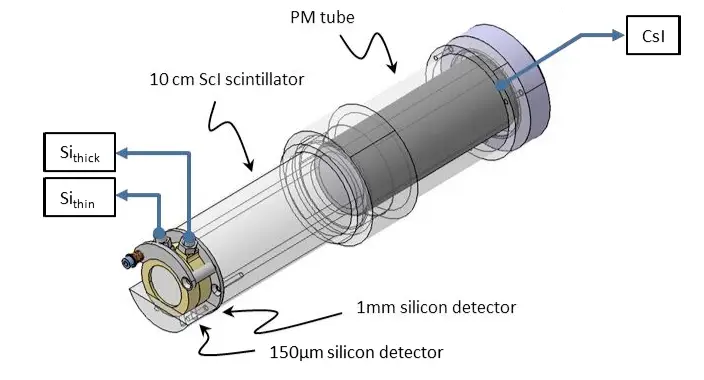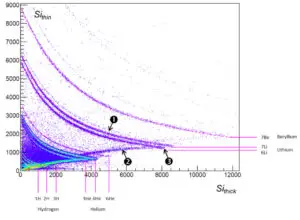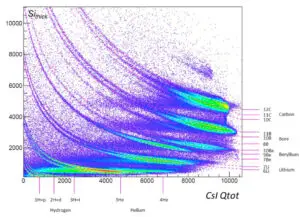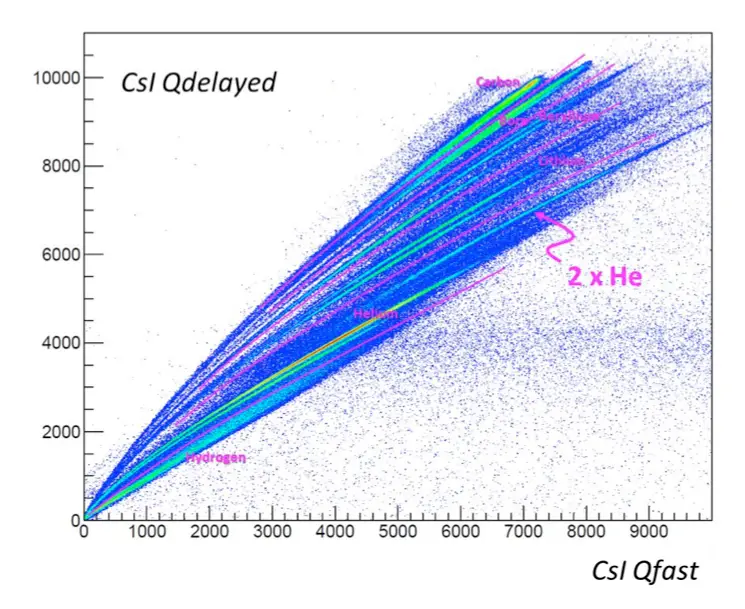FASTER USE CASE
CHARGED PARTICLES IDENTIFICATION USING A “TELESCOPE” DETECTOR
SUMMARY
So called “telescope” detector assemblies are powerful devices for charged particles identification. They are composed of several detectors (ionization chambers, silicon detectors and scintillators for instance) stacked in order to slow down incident charged particles, the first detector being the thinnest and the last one the thickest.
When an incident charged particle crosses two or more detectors, there is a strong correlation between the energy deposited in each detector. This correlation depends on the mass (A), the charge (Z) and the kinetic energy (E) of the particle allowing the physicist to clearly identify these parameters as we will see in this document.

WHAT WILL YOU FIND IN THIS DOCUMENT ?
- An example of “telescope” assembly based on two silicon detectors and a CsI scintillator
- The principles of charged particles identification by using a telescope
- Some simple energy calibration techniques for telescopes
- How to integrate this telescope in the FASTER data acquisition and processing system
PICTURES



